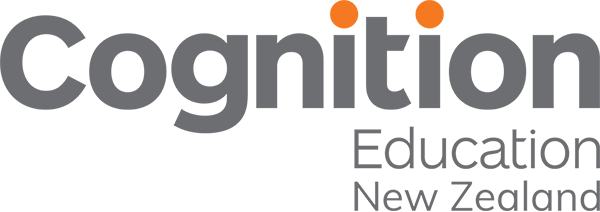You become an educator for a reason, it’s a calling, it’s in your soul. Whether you stumbled onto this pathway by accident, or pre-planned the route, it’s undeniably fulfilling but also consuming. Lately we have been on a rollercoaster of changes. How schools operate and deliver learning and how we do this in a way that protects our own and our students’ wellbeing have been key issues on our minds.
Potential Energy
During the first lockdown, nothing was impossible for our tamariki. The shared crisis brought educators together globally, all with the same purpose ‘to protect our students’. We behaved much like any creature does whose young are in grave danger from a threat. We did the impossible without question by stepping out of our comfort zones and holding the front lines. From handing out kai parcels and connecting with whānau, to putting ourselves uncomfortably out there on digital platforms, all of our actions came with an element of risk.
With heightened senses and alertness, we continue to look out for our young – wellbeing continuing to be the phrase on everyone’s lips. Advice from experts in their fields have been highlighted to us how important wellbeing is right now. Ironically, nobody needs to explain it to us, as it is this very concept ‘wellbeing for children’ that made us all choose this profession in the first place. It is with both sadness and relief that we unite and dust this word off; placing it at the forefront of what we do. Secretly ashamed this word fell into the cracks of education; we move forward to reposition it proudly.
When asked to define wellbeing and how it looks in the school or classroom, the responses are varied and personal. Our definitions are suited to each individual context and unique to the communities we belong to. Not surprisingly, there is no agreed international definition of wellbeing in the context of education. It cannot be measured by one single domain, it is a complex multidimensional construct. But what we can establish today about wellbeing is that it is very real. Neuroscience describes how chemicals in the brain impact on our ability to process information and learn. If unbalanced, our academic success and emotional resilience becomes awkward and challenging.
We find ourselves triggering our fight and flight responses during these uncertain times, thus causing chemical imbalances in our brains. This period of uncertainty at the moment has no end in sight and no solution, so instead, we are forced to be prepared to go into these levels of flux at a moment’s notice.
During this weightlessness period, what can we do to protect ourselves for the demands on our Hauora? What one thing can we keep constant in our practice that will be meaningful as we navigate forward?
The Art of Conversation
During this time, many thoughts and questions will be on our young people’s minds. Issues around loneliness, isolation, wants and needs, fear, death and boredom might be a concern for them. Instead of giving them a solution, invite the idea of allowing them to talk about their questions, feelings and emotions as part of a class discussion.
Why is this helpful?
They say that to have a conversation is an artform, and those who engage in it are artists. Similar to wellbeing, conversations are also multidimensional. They are developed in deep questions about truth, existence, reality, love and freedom and thus the birth of Philosophy. Inviting questions to make sense of the world around us is a natural human skill, children are great at it, but as adults we forget to do it as we are certain our life experiences have already helped us make sense of our being. Asking deep questions about the situation we find ourselves in promotes critical thinking and metacognition. One might describe an awareness of understanding one’s own thought processes as a key part of addressing wellbeing.
Teaching something like Philosophy to children at this moment in time sounds challenging and unnecessary, however when you break the word down into its raw form, Philosophy is a way of thinking by asking questions. Isn’t that what children do naturally? Usually, the classroom is set up to do the opposite, conversations are often more transactional; educators ask the questions and expect students to find the answers. Presenting the students, no matter what age, with a subject where they are provoked into asking deep, meaningful questions, while the teacher allows them to have a natural guided conversation, isn’t as abstract and as complicated as the title suggests. What the students ask and discuss as a Philosophy session unfolds is truly amazing, the conversations become transformational.
When we have group conversations, we are doing so much learning. How the brain responds to a conversation takes many skills, accesses multiple parts of the brain, and lights many synapses. Putting time aside in our busy timetables for more discussion is valuable on so many levels. Although students are not producing something you can see or measure, what is unfolding in their minds is far more relevant. Judith E Glaser describes the chemical process of a conversation in The Neuroscience of Conversation. These chemical reactions drive our state of mind, ultimately playing part of our Hauora. The University of Washington took Philosophy sessions online to help students cope in the height of the COVID-19 pandemic and found it highlighted the importance of what happens when we encourage students to think together.
Conversations in the Digital Age
As we live in a digital age, children being the natives, they don’t usually get time to have meaningful, facilitated conversations before they take to the keyboard in their digitally driven world. That world is far from safe, and there are no rehearsals to check ideas and broaden opinions before their words have been sent through the airwaves. Thus, making tamariki a lot less emotionally resilient to feedback and hearing other people’s points of view. Fewer adults are having conversations with children, as they too are consumed in a digital realm; an email that needs replying to, a paper that needs printing or some data to input, always something competing for our attention. The NPDL recently commented that:
“Ironically, despite the infusion of new technologies and social media that increase our ability to communicate, children have fewer emotional, social and cognitive interactions with people. This has led to multiple and frequent interactions but fewer and fewer meaningful connections where kids “feel felt” by others. It’s no surprise then that loneliness, depression, and anxiety are on the rise.”
This digital age also delivers information straight to our children’s eyes and ears without any filters or discretion. Does every adult know what their children are absorbing on their screens? During this pandemic, they will be picking up phrases, images and words like ‘surge, death toll, alert levels, outbreak’, imagine some of the confusion they cause. This is why there is all the more reason to invite students to ask us questions about these things in a safe conversation with people they trust.
What does this look like practically in the classroom?
Set the classroom up so that students are in a circle facing each other and the teacher is on the outside of the circle. Play a few warmup games to relax them and activate their thinking. Then present them with a provocation to get them thinking about a theme important to the situation. A provocation can be in the form of a storybook, prop, puzzle, image, poem or film clip. As the discussion unfolds, become a facilitator and encourage the students to do the following:
- Guide students of all ages to collaborate and share ideas in a safe intellectual environment;
- Invite them to reflect and build on ideas;
- Expose them to other people’s points of view;
- Broaden their perspectives;
- Allow them to check inferences.
There is a variety of research that suggests the more we talk to each other, the better our wellbeing is, and the deeper the conversations, the more satisfied a person is with their life and their happiness. During this time of flux, stop people feeling isolated by spending time having conversations in person or virtually (not just a text or email). Make these conversations transformational by following these steps:
#1 Create a safe environment for the conversation to happen
#2 Be an active listener
#3 Ask and encourage open questions
#4 Understand that there may be ‘no right answers’ to any of the questions
#5 Be supportive
Not only do transformational conversations trigger the frontal cortex (our control panel for conflicting thoughts), they build relationships and engagement. If you are an educator and you want to improve wellbeing for someone, start by putting the emails and messages down for a moment and initiate a conversation instead. Teach students:
- What listening looks like;
- How to disagree respectfully without getting hurt;
- To talk to each other and not just to the teacher;
- There isn’t always one right answer.
Be a facilitator of the conversation and most importantly listen to them without judging their ideas, you’ll be surprised what our tamariki are capable of thinking.

